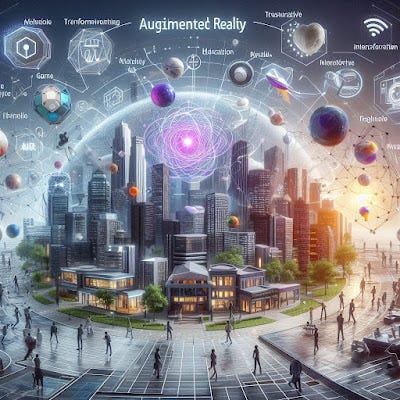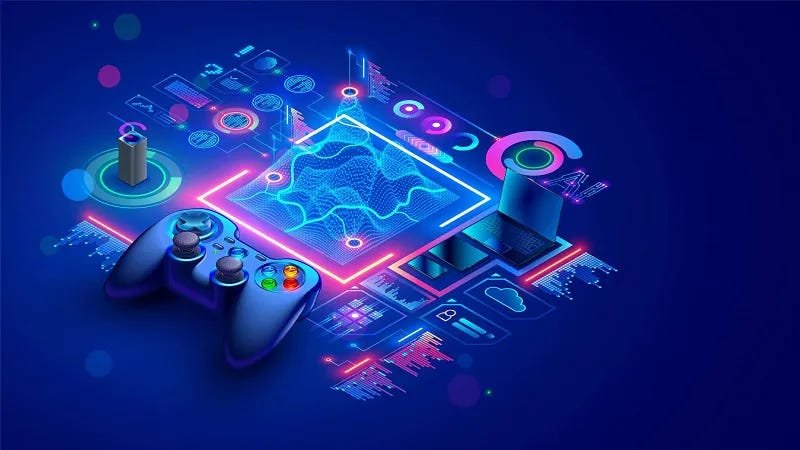
Evolution of Gaming Technology
Historical Perspective
The journey of gaming technology is as fascinating as the games themselves. From the early days of Pong and simple monochrome displays, the landscape has shifted dramatically. The introduction of home consoles in the late 1970s and 1980s marked a significant evolution, providing gamers with unprecedented access to entertainment right in their living rooms. Personal anecdotes often emerge from these formative years, recalling the excitement of weekend gaming marathons with friends or family gatherings around the TV.
Now, as we reflect on this history, several pivotal moments stand out:
- The Rise of 3D Graphics (mid-1990s): Games like “Doom” and “Final Fantasy VII” brought immersive worlds to life.
- Online Gaming Boom (2000s): The internet transformed solo gaming into social experiences.
- Mobile Revolution (2010s): Gaming became even more accessible with smartphones leading the charge.
Impact of Technological Advancements
These advancements have dramatically reshaped the gaming experience, influencing not only gameplay but also the community surrounding it.
Key impacts include:
- Enhanced Graphics and Sound Quality: Modern gaming delivers breathtaking visuals and immersive audio.
- Interactivity: Players now engage in more complex narratives and gameplay mechanics.
- Social Connectivity: Multiplayer online games foster a stronger sense of community.
As one can see, the advancements are more than just technical improvements; they are the driving forces that shape the entire gaming culture. As we explore further, the impact of emerging technologies will undoubtedly define the next chapter in this ever-evolving narrative.

Virtual Reality (VR) in Gaming
Applications and Implementations
Transitioning from the legacy systems that shaped gaming history, Virtual Reality (VR) introduces a level of immersion that was once purely speculative. Imagine donning a headset and stepping directly into your favorite game world—it’s a reality many gamers now enjoy.
VR applications in gaming have exploded in recent years, with noteworthy implementations:
- Immersive Storytelling: Games like “Half-Life: Alyx” allow players to experience narratives from a first-person perspective like never before.
- Physical Interaction: Games such as “Beat Saber” require players to move and interact physically, blurring the lines between gaming and reality.
Players often share stories of astonishing moments, such as feeling the rush of dodging virtual obstacles or the thrill of wielding a lightsaber during gameplay.
Future Trends and Possibilities
Looking ahead, the possibilities for VR in gaming are boundless. Some emerging trends include:
- Greater Accessibility: More affordable headsets are making VR gaming accessible to broader audiences.
- Increased Social Interaction: Collaborative games in VR could enhance social gameplay, allowing friends to explore virtual worlds together.
- Advanced Technology Integration: AI and VR interactions are set to create personalized, responsive game experiences.
As the technology matures, one can only imagine how these innovations will reshape the gaming landscape, paving the way for experiences we are just beginning to envision.

Augmented Reality (AR) Integration
Enhancing Gameplay Experience
Building on the foundation of immersive technologies like VR, Augmented Reality (AR) takes a different approach by blending digital elements with the real world. Gamers can step outside their front doors and engage with virtual characters and scenarios seamlessly integrated into their surroundings.
For example, “Pokemon GO” revolutionized gaming by encouraging players to explore their neighborhoods in pursuit of virtual creatures. This experience often brings personal anecdotes of players wandering through parks and interacting with others, creating a sense of community.
Key enhancements through AR include:
- Interactive Overlays:
- Players can see mission markers and guides as they navigate the real world.
- Social Engagement:
- AR fosters social connections by encouraging group play and exploration.
Industry Adoption and Breakthroughs
As the popularity of AR in gaming grows, industry adoption is witnessing significant breakthroughs. Major players are investing heavily in AR technology, with notable trends emerging:
- Integration in Major Franchises: Popular franchises are increasingly adopting AR features to amplify engagement.
- Developers Creating AR-only Experiences: Companies are launching games solely based on AR concepts, expanding gaming possibilities.
With continuous advancements in mobile technology and AR capabilities, it’s clear that AR is set to become a staple in the future of gaming, providing gamers with richer, more connected experiences.

Artificial Intelligence (AI) in Gaming
AI-Driven Game Development
As we transition from the captivating world of AR, the role of Artificial Intelligence (AI) in gaming emerges as a powerful catalyst driving innovation. AI-driven game development has revolutionized how developers create games, allowing for complex mechanics and dynamic gameplay.
For instance, procedural generation powered by AI can create expansive game worlds that feel genuinely unique every playthrough, as seen in titles like “No Man’s Sky.” Gamers often share their excitement about discovering new environments and challenges, ensuring a fresh experience with each session.
Key aspects of AI in development include:
- Enhanced NPC Behavior:
- Characters that learn and adapt to player actions, making them more lifelike.
- Dynamic Difficulty Adjustment:
- Games that automatically adapt in real-time to match the skill level of players.
Role of AI in Personalizing Gaming Experience
Beyond development, AI plays a crucial role in personalizing the gaming experience. By analyzing player behavior, preferences, and performance, games can tailor content and recommendations uniquely suited to each individual.
Players enjoy features such as:
- Customized Game Mechanics:
- Offering challenges that align with a player’s strengths while addressing weaknesses.
- Targeted Recommendations:
- Suggesting games or content based on past behavior and preferences, enhancing interest and engagement.
This evolving landscape showcases how AI not only shapes game creation but transforms the way players experience and bond with their favorite titles, paving the way for deeper connections in gaming.

Cloud Gaming Revolution
Infrastructure and Accessibility
As we embrace the advancements in AI, the Cloud Gaming Revolution is now shaping how players engage with their favorite titles. With cloud gaming, the heavy lifting of processing is done on remote servers, allowing individuals to stream games without the need for powerful local hardware.
This development has vastly improved accessibility, making gaming more inclusive. Players can enjoy high-quality gaming experiences on just about any device, whether it’s a smartphone, a tablet, or a low-end laptop.
Some significant benefits include:
- Reduced Hardware Costs:
- Gamers can avoid expensive gaming rigs.
- Instant Play:
- No downloads or updates, gamers can dive right into the action.
Challenges and Opportunities
However, as with any technological advancement, there are challenges alongside the opportunities. One of the primary concerns is:
- Network Reliance:
- A stable internet connection is crucial for optimal performance, which remains a barrier in many regions.
Additionally, there are opportunities for innovation:
- Game Library Expansions:
- Cloud services can offer vast libraries, providing access to a wider range of titles.
- Cross-Platform Play:
- Players may be able to move between devices seamlessly, enhancing the gaming experience.
As the cloud gaming landscape evolves, it holds the potential to redefine how we play and experience games, bridging the gap between players and their favorite content like never before.

Inclusive Gaming Technologies
Accessibility Features
Continuing from the impact of cloud gaming, the realm of inclusive gaming technologies is gaining traction, focusing on making games more accessible to everyone, regardless of their abilities. The importance of accessibility features cannot be overstated, as they allow all players to enjoy the rich world of gaming.
For instance, many games now incorporate:
- Customizable Controls:
- Options for remapping game controls to suit physical needs.
- Visual and Auditory Aids:
- Subtitles, colorblind modes, and audio cues enhance the experience for those with sensory differences.
Personal stories often emerge where players commend developers for making games that accommodate their needs, creating a sense of belonging within the gaming community.
Diversity and Representation in Games
Beyond accessibility, the push for diversity and representation in games is reshaping narratives and character development. Players now seek-to see themselves reflected in the stories they experience, which enhances emotional connection and immersion.
Key developments include:
- Diverse Character Options:
- Characters of various races, genders, and backgrounds are increasingly common, allowing players to choose avatars that resonate with them.
- Inclusive Storylines:
- Narrative arcs that explore diverse cultures and perspectives enrich the gaming experience.
As the industry continues to evolve, the emphasis on inclusive technologies fosters a vibrant gaming community, paving the way for a future where every player feels seen and valued.

Blockchain and Cryptocurrency in Gaming
Securing Digital Assets
As we transition from the inclusive advancements in gaming, Blockchain technology is emerging as a revolutionary way to secure digital assets within the gaming ecosystem. By using decentralized ledgers, players can have true ownership of their in-game items and currencies, setting a new standard for digital rights.
For example, games like “Axie Infinity” utilize blockchain to allow players to buy, sell, and trade unique in-game assets securely. This has fostered personal anecdotes from players celebrating their success in creating and selling rare in-game items, establishing their own mini-ecosystems.
Key advantages include:
- Immutable Ownership:
- Players can prove ownership of assets securely.
- Safety from Fraud:
- The risk of hacking or duplicating items is significantly reduced.
Monetization and In-Game Economies
Blockchain also opens doors for innovative monetization strategies and in-game economies. By integrating cryptocurrencies, games can create more authentic economic experiences.
Important aspects of this integration include:
- Earning In-Game Currency:
- Players can earn cryptocurrency for gameplay, leading to real-world value.
- Decentralized Marketplaces:
- Players can trade assets directly with others without intermediaries, fostering a player-driven economy.
As this technology continues to progress, it’s clear that blockchain and cryptocurrency can significantly transform gaming, offering players new ways to engage, monetize, and enjoy their digital adventures.

The Future of Gaming Consoles
Console Innovations
Moving forward from the transformative impact of blockchain technology, the future of gaming consoles promises an exciting array of innovations. Today’s consoles are not just about playing games; they aim to create a holistic entertainment experience.
Recent advancements highlight:
- Enhanced Performance:
- Consoles are now equipped with powerful GPUs and CPUs, allowing for stunning graphics and faster load times, as seen with the latest iterations of the PlayStation and Xbox.
- Integrated Streaming Services:
- Consoles are becoming multimedia hubs, offering subscriptions to movies, shows, and music alongside gaming.
Gamers often share tales of seamlessly shifting from an epic gaming session to binge-watching their favorite series—all on the same device.
Cross-Platform Integration
Alongside technological innovations, cross-platform integration is reshaping how gamers connect and play together. The ability to play with friends across different console platforms fosters a more unified gaming community.
Key benefits include:
- Increased Accessibility:
- Gamers can interact with friends regardless of their chosen device, breaking down barriers.
- Expanded Player Bases:
- Games can thrive with larger communities, enhancing multiplayer experiences.
As we look to the horizon, the evolution of gaming consoles, highlighted by innovative technologies and cross-platform capabilities, paves the way for a richer, more connected gaming environment.

E-Sports and Competitive Gaming
Rise of E-Sports Industry
Transitioning from the dynamic world of gaming consoles, the rise of the e-sports industry has transformed how we perceive competitive gaming. Once considered a niche activity, e-sports has blossomed into a global phenomenon, attracting millions of viewers and significant investment.
Tournaments like “The International” for Dota 2 and “League of Legends World Championship” now boast multi-million dollar prize pools, demonstrating the industry’s growth. Personal anecdotes from fans often highlight the adrenaline rush of watching live competitions, celebrating the triumphs of their favorite teams.
Key factors driving this rise include:
- Mainstream Acceptance:
- Major networks and platforms broadcasting e-sports events have solidified gaming as a spectator sport.
- Diverse Participation:
- Players from various backgrounds and skill levels are entering competitive scenes.
Technological Advancements in Competitive Gaming
Alongside this growth, technological advancements continue to shape competitive gaming. Enhanced streaming technology allows for high-quality broadcasts and real-time interactions, creating a more engaging experience for viewers.
Considerable innovations encompass:
- Improved Streaming Platforms:
- Services like Twitch provide robust tools for community engagement and interaction.
- Advanced Analytics Tools:
- Players and teams use data analytics to refine strategies and improve performance.
As the e-sports industry evolves, the integration of cutting-edge technology ensures a vibrant future where competitive gaming can continue to thrive and attract new audiences, fueling passion and excitement worldwide.

Sustainability in Gaming Technology
Eco-Friendly Practices
As we navigate through the thrilling world of e-sports, the gaming industry is increasingly recognizing the importance of sustainability in technology. Eco-friendly practices are becoming more prevalent, with developers and manufacturers taking steps to reduce their environmental impact.
For instance, companies are now focusing on:
- Sustainable Materials:
- Utilizing recycled plastics and eco-friendly packaging for consoles and peripherals.
- Energy Efficiency:
- Designing consoles that consume less power during use and in standby modes, which resonates with the eco-conscious gamer.
Many gamers share experiences of feeling good about supporting brands that prioritize the planet, as it aligns their interests in gaming with responsible choices.
Green Gaming Initiatives
In addition to individual practices, green gaming initiatives are forming a collective effort towards sustainability. Various organizations and developers are spearheading campaigns to promote eco-responsibility among players and producers alike.
Noteworthy initiatives include:
- Carbon Offsetting Programs:
- Companies implement measures to offset their carbon footprints through reforestation and renewable energy projects.
- Awareness Campaigns:
- Engaging the gaming community in sustainability discussions and encouraging them to adopt green habits.
By embodying such values, the gaming industry not only enhances its reputation but also cultivates a culture that prioritizes environmental stewardship, ensuring a greener future for all gamers.

Conclusion and Future Prospects
Recap of Innovations
As we wrap up our exploration of the vibrant world of gaming technology, we can reflect on the remarkable innovations that have shaped the landscape. From the rise of virtual reality and cloud gaming to the integration of blockchain and AI, the journey has been nothing short of exhilarating.
Key innovations include:
- Enhanced Accessibility:
- More gamers can now join in, thanks to inclusive technologies and practices.
- Sustainable Initiatives:
- The industry is increasingly prioritizing eco-friendly practices and green gaming.
Many players have shared their excitement about these changes, illustrating how they resonate with a community growing ever more diverse.
Predictions for the Future of Gaming Tech
Looking ahead, the future of gaming tech holds immense potential. We can anticipate:
- Further Integration of AI:
- Games may evolve to provide even more personalized experiences based on player behavior and preferences.
- Expansion in E-Sports:
- Competitive gaming is likely to reach even greater heights, with broader audiences tuning in and participating.
As technology continues to advance, the gaming landscape will undoubtedly evolve, crafting experiences that not only entertain but also enrich our lives in ways we have yet to imagine.

